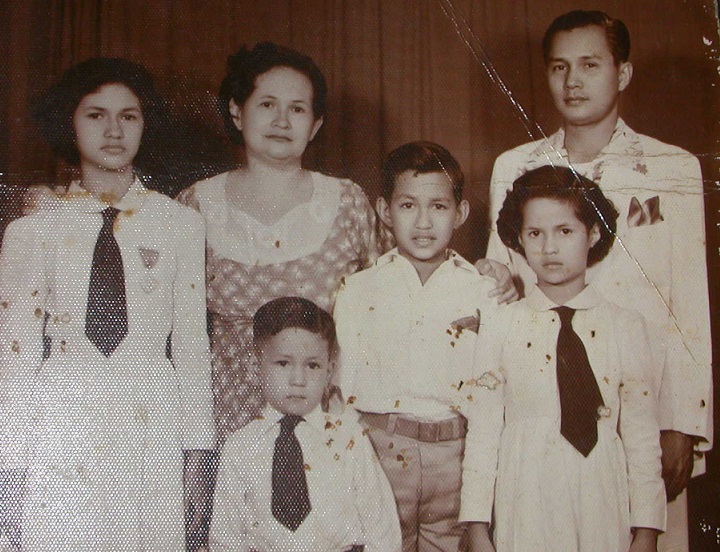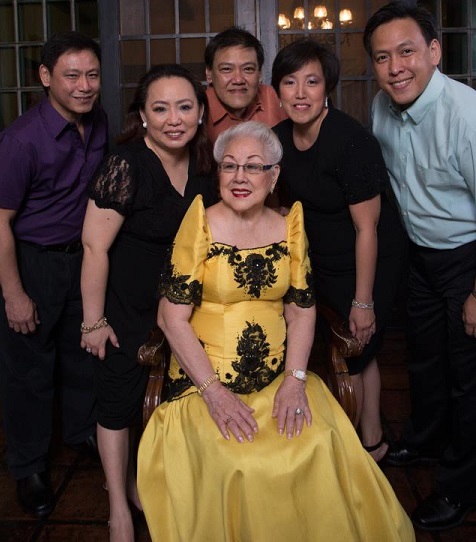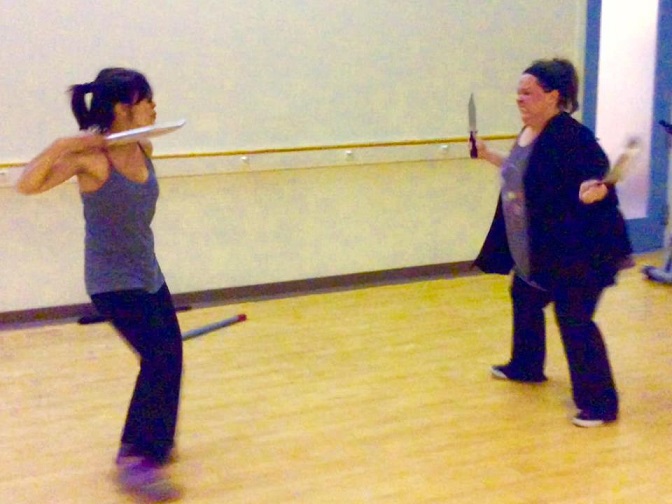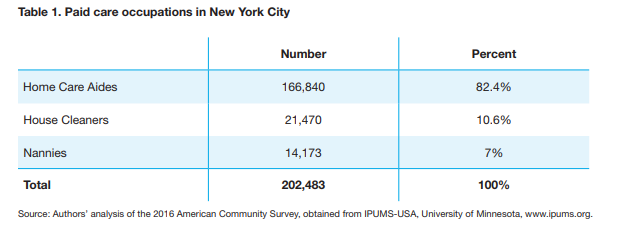NYC nannies, caregivers are mostly women of color; number of Asians growing
“Lifting up Paid Care Work: Year One of New York City’s Paid Care Division” was issued this month by the New York City Department of Consumer Affairs. The report examines the conditions of the city’s more than 202,000 domestic workers — home care aides, house cleaners, and nannies – also known as ‘paid care workers.’ The labor laws on sick leaves, overtime wages, etc. that are supposed to protect the vulnerable workers are also addressed.
An excerpt from the 56-page report below:
In the last census, women represented 90 percent of the paid care workforce nationally and 94 percent in New York City, similar to the levels observed for the past 80 years. By contrast, care work as a share of women’s employment in New York City has ebbed and flowed, dropping from 15 percent of women’s labor force participation in 1930 to a low of 2 percent in 1990 and then up to 8 percent today. This trend can be explained by two key factors:
1. The decline of the portion of paid care jobs comprising women’s overall employment between 1930 and 1990 was driven in large part by women’s entrance into a wider range of occupations.
2. The reversal since 1990 is most likely a result of increasing demand for home care (itself a consequence of population aging and increased public financing for paid care labor, mainly via Medicaid).
While the paid care workforce has always been predominantly comprised of women, there have been significant racial and ethnic variations over time. As white women born in the United States began transitioning into other forms of labor, their representation in the paid care workforce declined significantly. In 1930, white women accounted for 66.5 percent of the paid care workforce in New York City, declining to just 10.2 percent by 2010. The demand for domestic work was increasingly filled by recent immigrants and members from racial and ethnic groups with limited access to other employment opportunities, causing the racial and ethnic composition of the paid care workforce to shift considerably.
Of these racial and ethnic groups, African-Americans represented the majority of women paid care workers. In New York City, African-American women first surpassed white women as the largest group of care workers in the 1940s. Since then, African-American women’s representation in the paid care workforce in New York City has never dropped below 30 percent, reaching a peak of 60 percent in 1970 and declining to 38 percent in 2010. African-American women remained predominant in the paid care workforce until 2010 when Hispanic women became the majority group within the paid care workforce in New York City, a trend that solidified during the 2000s. In the most recent data, Hispanic workers comprised 37 percent of New York City’s paid care workforce, and African-Americans comprised 34 percent.
Additionally, Asian representation within the paid care workforce has seen steady increases. By 2010, Asian representation in the paid care workforce was 11 percent, which represented slow but steady growth from 1.8 percent in 1930.
These shifts in the racial and ethnic composition of the paid care workforce have been driven by the gradual opening of more professional opportunities outside of the home for white women, and later women of color, in addition to changes in the racial and ethnic composition of the city’s population.
(C) The FilAm 2018















